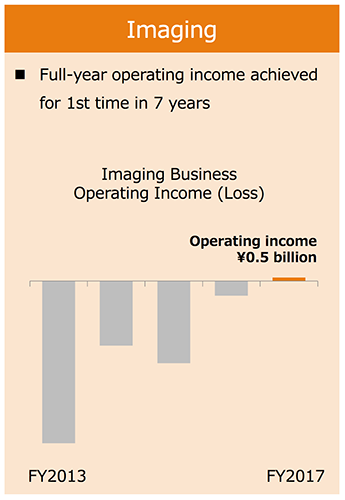Sony announces the new 16-35mm GM and the 14-24mm G lens!

Sony made us the pleasant surprise to not only announce one…but two wide angle zooms! Here they are:
Sony 16-35mm f/2.8 GM at Bhphoto, Adorama and Amazon. In Eu at Park UK.
Sony 12-24mm f/4.0 at Bhphoto, Adorama, and Amazon. In Eu at Park UK.
It has to be mentioned that the new Sony 12-24mm is particularly interesting as it weights only half the Sigma 12-24mm. If the Quality is there with the Sigma this sure can become a winner for Sony!
And this is the full press text from Sony:
Sony Introduces Two New Wide-Angle Full-Frame E-Mount Lenses
New 16-35mm F2.8 GM Completes the E-mount F2.8 G Master “trinity”; 12-24mm F4 G covers widest angle among all full-frame E-mount lenses
SAN DIEGO, May 17, 2017 – Sony Electronics, a worldwide leader in digital imaging and the world’s largest image sensor manufacturer, has today announced two new additions to their growing lineup of full-frame E-mount lenses.
The new lenses include the FE 16-35mm F2.8 GM large aperture wide-angle zoom lens (model SEL1635GM) and the FE 12-24mm F4 G ultra wide-angle zoom lens (model SEL1224G). The FE 16-35mm F2.8 GM lens brings the incredible high-resolution and beautiful bokeh of Sony’s flagship G Master series to a wide 16-35mm focal length for exceptional landscapes, cityscapes, portraits and more, while the 12-24mm F4 G, Sony’s widest full-frame E-mount lens to date, offers a dynamic new perspective for all Sony E-mount shooters. In total, Sony’s full-frame E-mount lens lineup now covers from ultra-wide 12mm to super-telephoto 800mm (with teleconverter) focal length range.

New FE 16-35mm F2.8 GM Wide-Angle Zoom Lens
The new FE 16-35mm F2.8 GM wide-angle zoom joins the acclaimed FE 24-70mm F2.8 GM and FE 70-200mm F2.8 GM OSS to round out Sony’s lineup of F2.8 large aperture zoom lenses. Equipped with a variety of Sony’s most advanced lens technologies, it is the first wide-angle G Master model, making it ideal for an extensive variety of shooting situations – landscapes, architecture, close up portraits, sports, action and much more. It is also exceptionally lightweight and compact, maximizing portability and usability.
The new lens features exceptional corner-to-corner sharpness, with an optical design that includes five aspherical elements, two of which are Sony’s original XA (extreme aspherical) elements that reduce aberration and delivers the ultimate resolution throughout the entire zoom and aperture range. The front XA element on the FE 16-35mm F2.8 GM is the largest XA element ever produced, ensuring optimum quality. Additionally, two ED (Extra-low-Dispersion) glass elements keep chromatic aberration to a minimum while maximizing resolution, and Sony’s original Nano AR coating suppresses internal reflections to ensure excellent image contrast and clarity.
The lens features a near circular aperture shape at all settings, and the combination of the aforementioned XA element with its 11 blade aperture design produces images with sharply focused subjects and beautifully defocused backgrounds or “bokeh”. It also has two DDSSMs (Direct Drive SSM) that compose a floating focusing system and ensure that AF acquisition is speedy and quiet, making it an ideal choice for shooting still images as well as movies.
The FE 16-35mm F2.8 GM is also dust and moisture resistant1, has a fluorine coating on the front lens that helps to both prevent dust or grease marks and remove them easily if they do become a trouble. There is also a customizable focus hold button and a hood release button.
New FE 12-24mm F4 G Ultra-Wide-Angle Zoom Lens
A uniquely designed ultra wide-angle zoom lens, the new FE 12-24mm F4 G lens produces outstanding image quality in a compact, lightweight design, weighing in at approximately 20 oz. Sony’s widest full-frame E-mount lens, it offers a dynamic perspective for landscape, architecture and interior photography, and is well-suited for both stills and video shooting.
The lens features an innovative optical design with four aspherical elements that ensure excellent corner to corner sharpness and resolution. Additionally, the lens has three ED glass elements and one Super ED glass element that minimize chromatic aberration throughout the entire image, and also includes Sony’s original Nano AR coating.
The new FE 12-24mm F4 G lens includes a DDSSM (Direct Drive SSM) for fast, quiet and precise AF performance, plus a customizable focus hold button and focus mode switch. It is also dust and moisture resistant 1.
Pricing and Availability
The new FE 16-35mm F2.8 GM Wide-angle Zoom Lens will ship this August and will be sold for about $2,200 US and $3,000 CA.
The new FE 12-24mm F4 G Ultra wide-angle Zoom Lens will ship this July sold for about $1,700 US and $2,300 CA.
A variety of exclusive stories and exciting new content shot with these new lenses and other Sony ? products can be found atwww.alphauniverse.com , Sony’s community site built to educate, inspire and showcase all fans and customers of the Sony ? brand.
Content is also available at the global Sony Photo Gallery and the Sony Camera Channel on YouTube. Detailed information pages within Sony.com for the new products can be found at:
- (US) – FE 16-35mm F2.8 GM
- (CA) – FE 16-35mm F2.8 GM
- (US) – FE 12-24mm F4 G
- (CA) – FE 12-24mm F4 G








